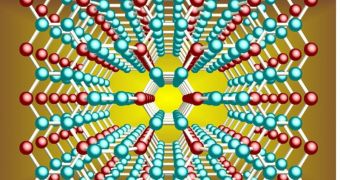An international collaboration of researchers announces the discovery of a new form of carbon that can remain metallic at room temperature. This 3D form of the element can retain this property under normal pressure, and does not require strict conditions to preserve its state.
According to the group behind the study, 3D metallic carbon could open the way for a variety of new applications, as well as for further strides into the field of materials science. At this point, the material has yet to be synthesized in practice, and exists only as a theoretical construct.
The investigation was led by scientists from the Peking University, the Virginia Commonwealth University, and the Shanghai Institute of Technical Physics. Details of the work appear in the latest issue of the journal Proceedings of the National Academy of Sciences (PNAS), CleanTechnica reports.
The science group hopes that the research will allow other investigators to start experimenting with the new form of carbon, eventually leading to its creation in real life. Over the past few years, several new types of carbon have been found, and all have the potential to be used in the near future.
Using state-of-the-art theoretical method, the team hypothesized a material that uses interlocking hexagons to cement its inner structure. This is the first time that stable 3D carbon is created at room temperature and standard pressure.
“The interlocking of hexagons provides two unique features – hexagonal arrangement introduces metallic character, and the interlocking form with tetrahedral bonding guarantees stability,” explains VCU College of Humanities and Sciences professor of physics, Puru Jena, PhD.
“The right combination of these properties could one day be applied to a variety of technologies,” adds the investigator, who was also the co-lead researcher on the PNAS paper.
Previous studies on stable 3D metallic carbon have resulted in such structures, but the manufacturing process required up to 3 terapascals of pressure to turn the substance metallic. This did not bode well for practical, economically feasible applications for the material.
“The new metallic carbon structures may have important applications in lightweight metals for space applications, catalysis and in devices showing negative differential resistance or superconductivity,” concludes Peking University professor and co-lead researcher, Qian Wang, PhD.

 14 DAY TRIAL //
14 DAY TRIAL //